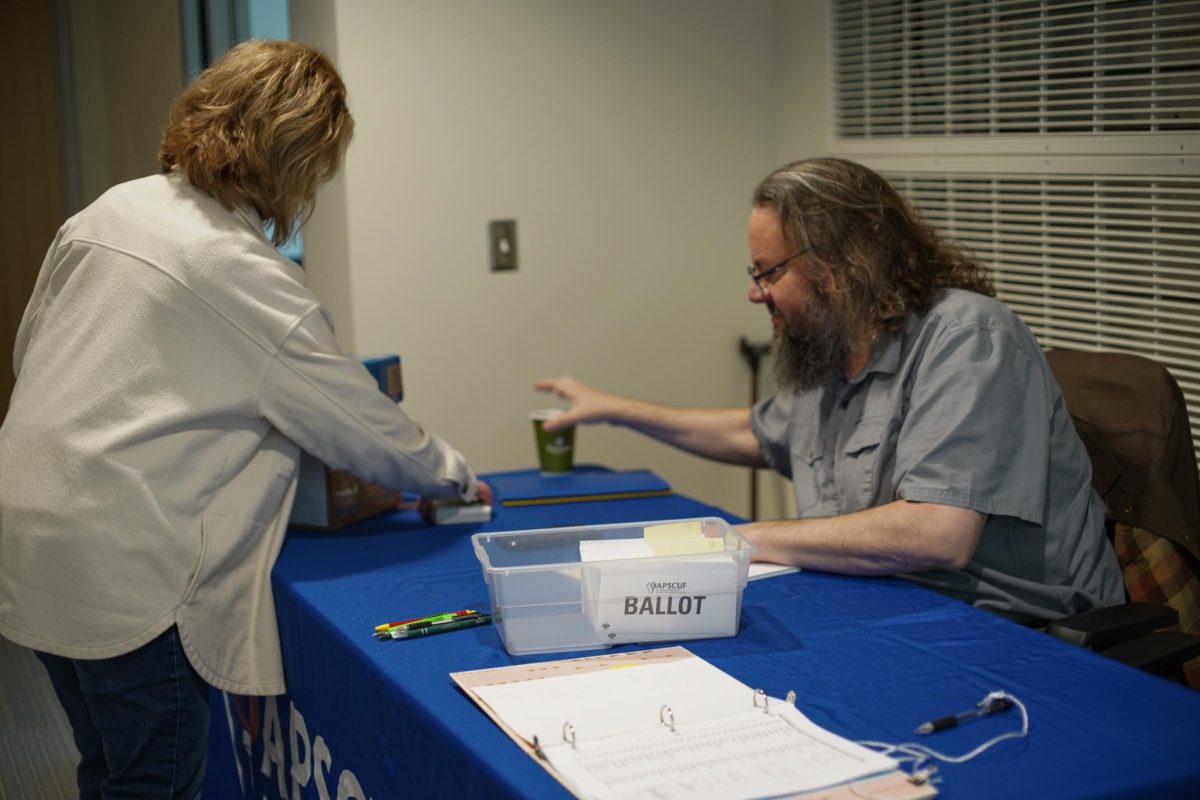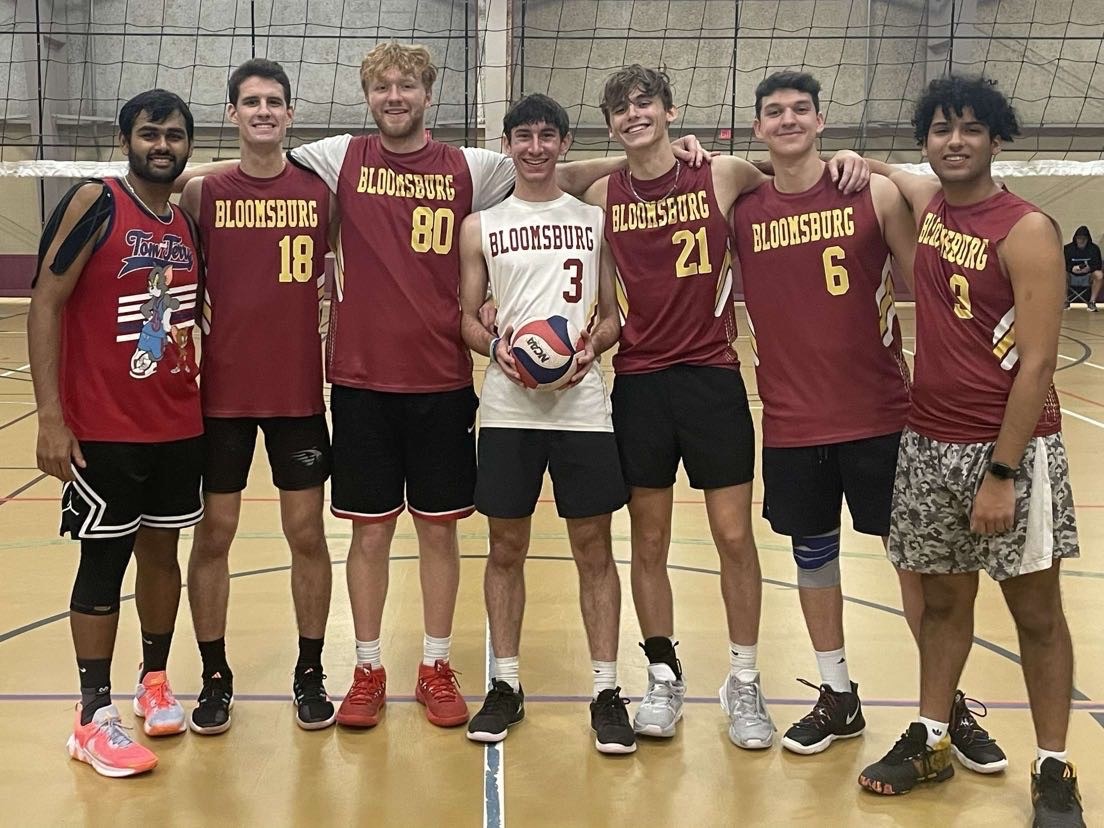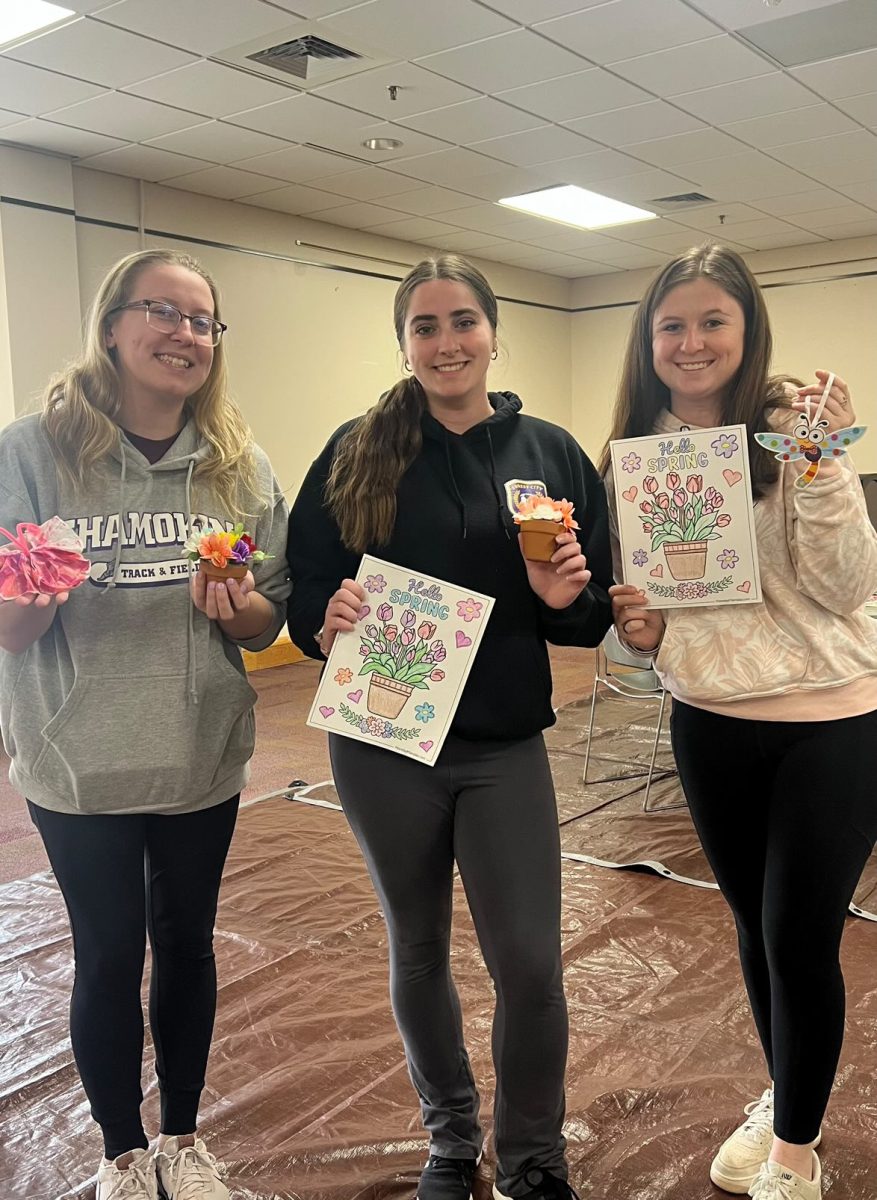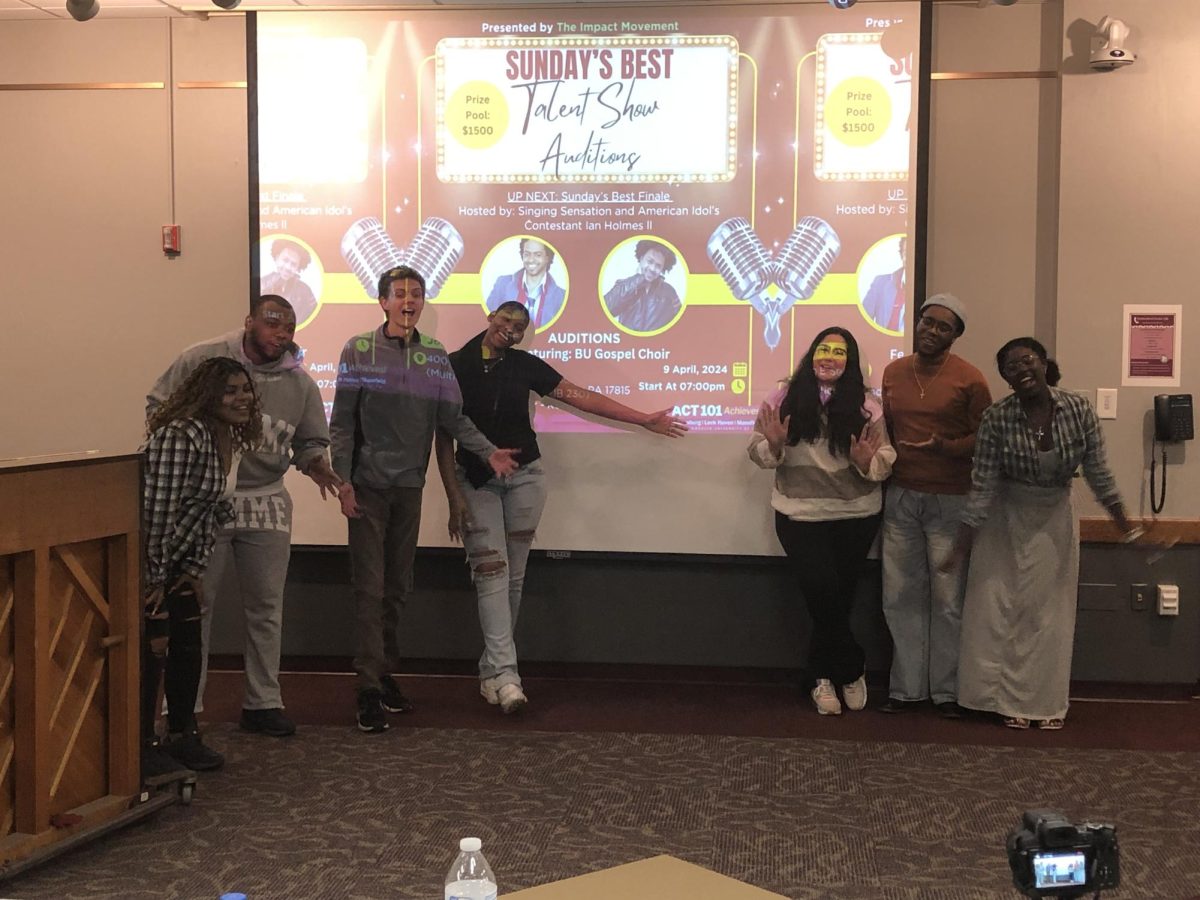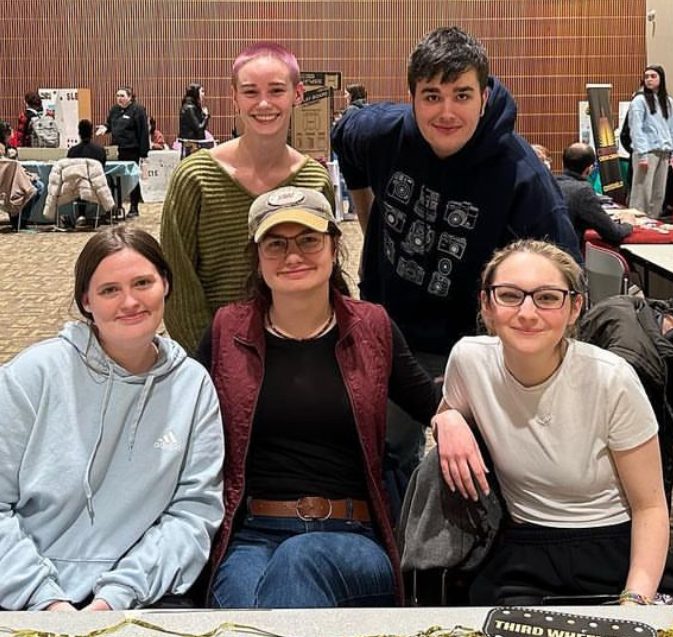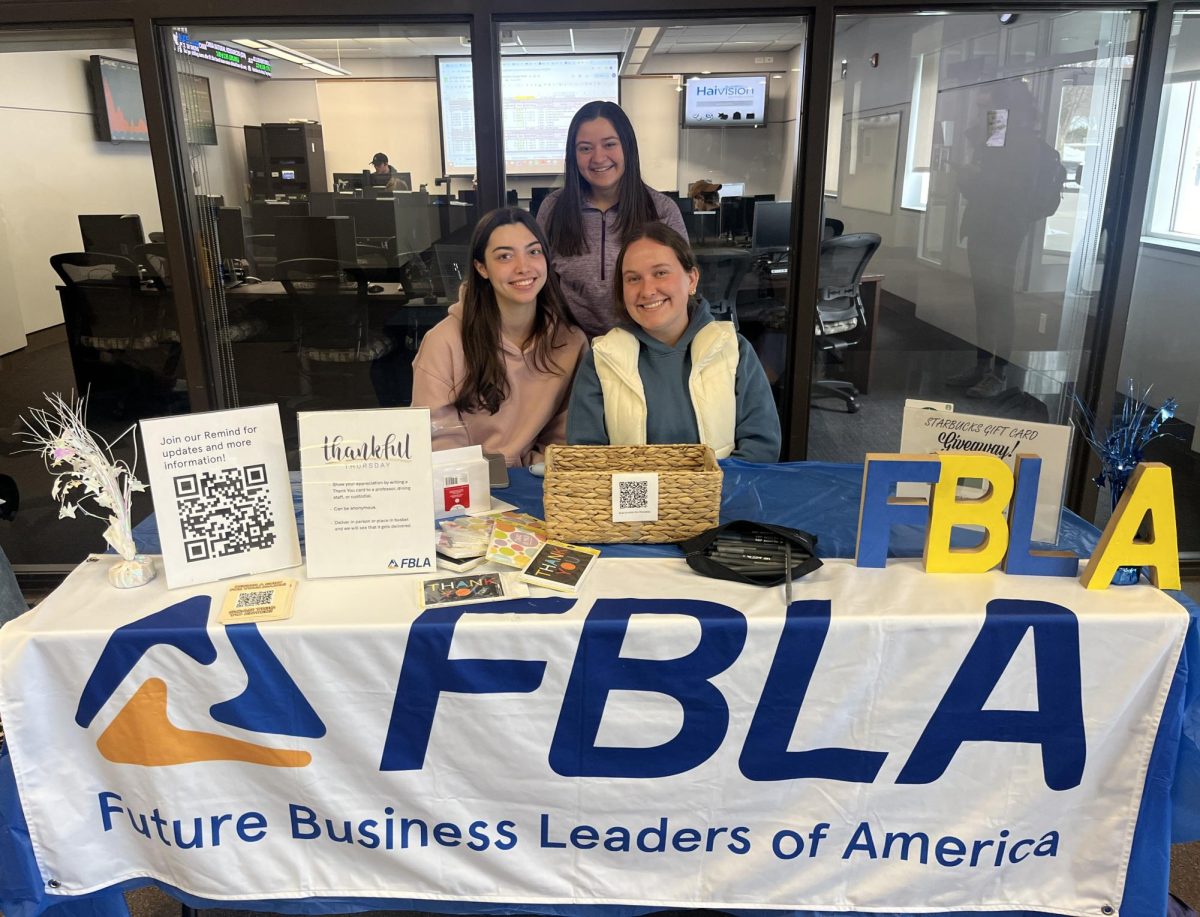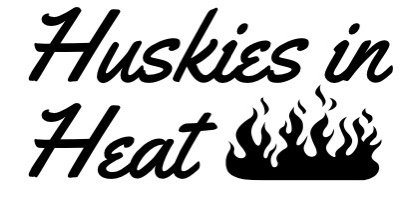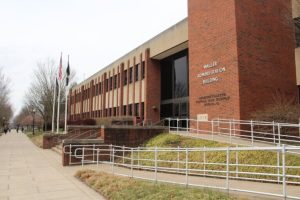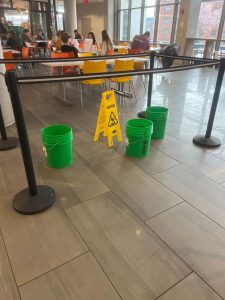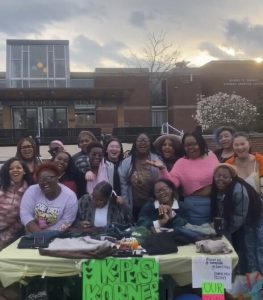Forks Farmers Todd and John Hopkins shared their experiences with grass farming, feeding soil and Community Supported Agriculture (CSA) with the BU community on Oct. 23.
Todd and John, both Pennsylvania natives, worked on ranches out west where they learned all their skills with producing clean, chemical-free food. Learning about what’s found in processed meat influenced how the couple feeds their family, researching everything that went into producing food. Today, the two own a business where they raise grass-fed lamb and beef from birth, in addition to woodlot pork and free-range eggs.
Their farm is solely based around their community, employing people to help on the farm in exchange for lunch. “We do this every Friday from June through September. We process 100-200 chickens and serve a big lunch; it’s just a wonderful community event,” Todd says.
John and Todd practice pasture animal feeding operation (PAFO) on their farm (raising animals in their natural environment) instead of confined animal feeding operation (CAFO). “There are significant nutrition differences in meats that are raised on pastures versus meats that have been fed in a feedlot,” John says.
“[CAFO] is not a natural system,” John adds. “When you take an animal, a natural being, and put it in an environment that it is not used to, things start to fall apart,” he said.
Another practice the couple utilizes is the conversion of solar energy to dollars. “I learned this concept studying holistic research management,” John says. He explained that their fields have millions of “solar panels,” referring to natural solar converters such as grass or leaves.
“Through photosynthesis we can take energy and produce sugar, carbs and protein: all these cool things that we can feed to animals… our whole foundation is photosynthesis.” he adds.
Through natural solar energy, John and Todd have the ability to feed their animals and then sell it to the community in exchange for dollars. By going to a supermarket and asking for grass-fed beef, he explained, the conversion of solar energy to dollars takes place.
The other canopy the Hopkins’ manage, besides the pastures, is the forest canopy. The canopy of a tree is nothing more than a solar converter, they explain, taking energy from the sun and producing carbon. This produces resources such as firewood, chips, shavings, shade and tree fruit, and also helps with aesthetics and wildlife.
Another important aspect of responsible farming, they explain, is giving animals a comfortable environment to live in.
“You cannot produce good food in a stressful situation,” John explains, as “stress changes the ph of the blood and in the meat.” John stresses that it’s the job of a farmer to give their animals a stress-free, comfortable environment.
The couple has studied extensively the proper way to handle animals, choosing against using devices such as whips “Moving animals and loading animals and processing animals should be a low stress, non-painful process. The best way to pull an animal is being positive,” John says.
Despite raising hundreds of animals, the Hopkins have had very few medical issues with their animals. This is because their animals are in a good and healthy environment. “Our medical bill last year was 44 dollars,” he comments.
Stressing the importance of being a responsible consumer, Todd says “I think it is so important to know where your food is from, especially in your generation. I think we have to do more and more of that education, putting a face with your food and your product. I think that is key.”



